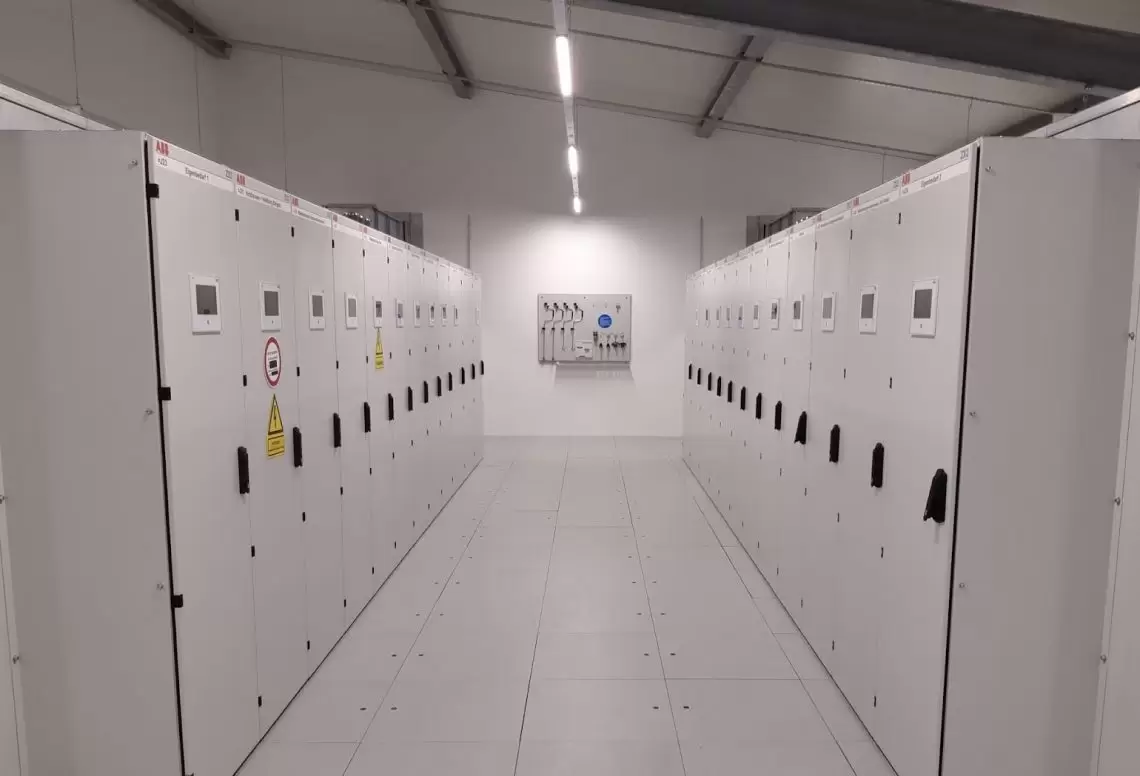A new compact gas-insulated system is helping organisations reduce emissions by removing the need for SF6, a powerful pollutant that has been a key component of switchgear for decades.
In 1997, the Kyoto protocol identified sulphur hexafluoride (SF6) as one of the six primary greenhouse gases damaging our planet. Highly stable, electronegative and non-flammable, its unique chemical properties have seen it widely adopted by the electric power industry, which accounts for around 80 per cent of all SF6 produced worldwide.
While SF6 is believed to contribute to less than 1 per cent of global greenhouse gas emissions, the IPCC reports it has a warming potential 23,900 times that of carbon dioxide, and alarmingly lives in the atmosphere for some 3,200 years.
Since 2002, the SF6 concentration in the atmosphere has doubled. In 2019, the amount emitted was equivalent to 44 million passenger vehicles being driven for one year. To help combat the problem, global technology firm ABB designed SF6-free medium voltage gas-insulated switchgear (GIS).
Using AirPlus technology, which combines more than 85 per cent dry air with up to 15 per cent 3M Novec insulating gas, this solution can help energy businesses greatly reduce their global warming impact. ABB Australian Product Marketing Manager Saw-Chin Toh says that since 2015, some 5,000 SF6 free gas-insulated switchgear have been installed worldwide.
“Engineers are often resistant to change. They have been using SF6 for 50 years and they feel comfortable with it,” she says. “For this reason, the gas-insulated switchgear spent a long time in research and development — from developing the chemical alternative AirPlus with 3M, to rigorous evaluation.”
Compared to air-insulated alternatives, gas-insulated switchgear is compact, making them suitable to use in confined spaces. Their encapsulated design also makes them safer and more reliable.
“The product we developed feels exactly the same in terms of design and operation,” says Toh. “This means that when it comes to handling the gas, operating the switchgear, insulation benefits and dielectric strength, the only difference is that AirPlus / Dry Air is SF6-free. We also ensured that there are no additional safety risks by keeping the pressurised tanks low for rating up to 33kV. In the event of abnormal leakage, the switchgear can continue to operate safely up to the point of repair.”
The European Union is looking to phase out SF6 in the coming years, and its regulations are expected to have flow-on effects to many other parts of the world. Toh says that ABB is helping customers plan for the future.
“Our PrimeGear ZX0 and ZX2 AirPlus are the first switchgear compatible with both SF6 and AirPlus / Dry Air, meaning it has been designed so that customers don’t have to make the decision immediately,” she says. “It also has a 40-year lifespan, so when the time comes for a customer to improve their sustainability, they can cut over at any time and use the eco-friendly gas on the same switchgear.”
Efficiency gains
While the sustainability benefits of gas-insulated switchgear helps businesses reduce their carbon footprint, the technology can also enhance efficiency and reduce costs through ABB Ability Energy and Asset Manager — a state-of-the-art cloud solution that integrates energy and asset management in a single intuitive dashboard.
“Our switchgear is smart. Long term, customers will see a 30 per cent reduction in operating costs over its lifespan,” says Toh. “Inbuilt smart sensors help to monitor loads and reduce energy use in each particular product. This means using less copper, less energy, and less air conditioning, so there are further sustainability gains on top of eliminating SF6.”
ABB solutions are sealed for life and do not require on-site gas handling. Also, given the gas handling is similar to that of SF6, no additional training or certification for maintenance staff is required.
“Our technology helps monitor the condition of the switchgear, so you don’t need to be locked into a maintenance schedule based on time or usage,” says Toh.
It is particularly useful in Australia, says Toh, as the country has a lot of remote substations, some of which are unmanned. In those contexts, organisations can assess the switchboard health conditions from a laptop rather than sending maintenance operators out.
“AI technology is built into the asset management platform, so we’re not just giving users the data,” says Toh. “It uses a traffic light system to help interpret the data and suggest what maintenance is needed.”
Want to learn more about how you can help to eliminate SF6 emissions? Visit ABB’s website or sign-up to ABB Electrification quarterly newsletter to find out about the latest technology and innovation shaping our industry.




